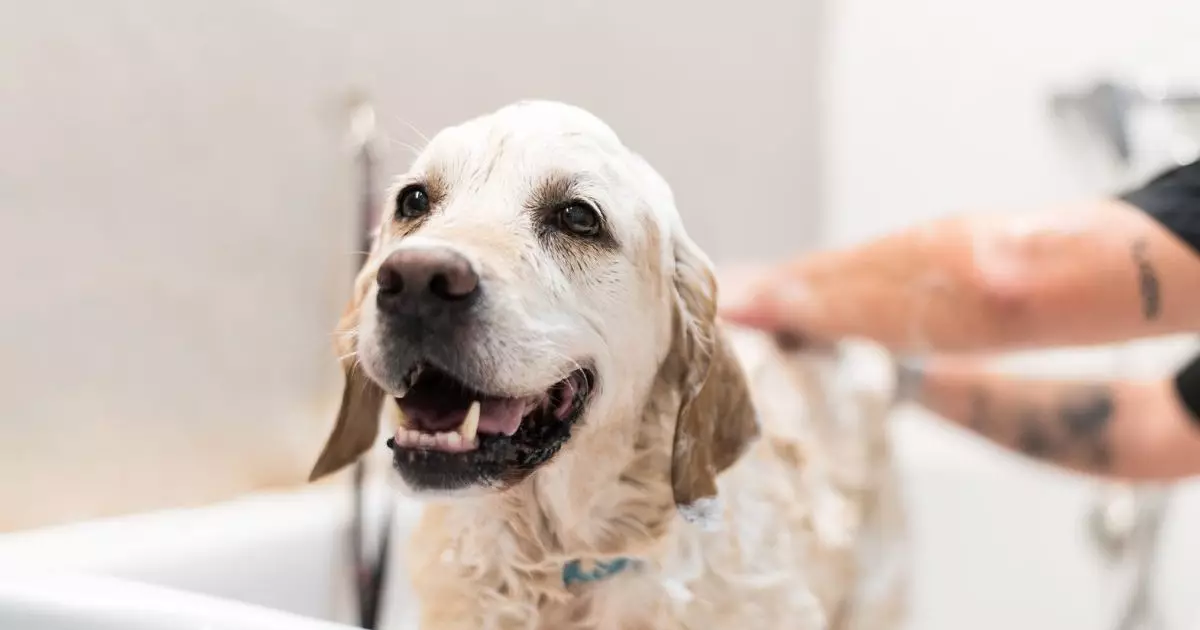Bathing your dog is an essential part of maintaining their health, but the reality is that most dogs would prefer to avoid bath time altogether. Regular baths can prevent dirt buildup, lessen the chance of parasites, and keep your furry friend smelling fresh. However, knowing how often to bathe your dog and the right techniques to use can be a challenge. This guide aims to clarify these uncertainties and provide tips for a successful bathing experience.
While humans often need daily showers, dogs have different hygiene requirements. Generally, the frequency of bathing your dog depends on several crucial factors, including their breed, coat type, lifestyle, and any specific skin or health concerns. It’s best to consult with your veterinarian for personalized advice, but here are some common guidelines to follow:
– Monthly Baths for Most Dogs: For many breeds, a monthly bath is sufficient to keep their coat healthy and clean.
– Regular Baths for Oily-Coated Breeds: Dogs such as Basset Hounds, known for their oily coats, may require baths once a week to manage their natural oils effectively.
– Less Frequent Baths for Short-Haired Breeds: Short-haired dogs like Beagles and Basenjis may thrive with fewer baths, as their coats generally require less maintenance.
– Sparing Baths for Water-Repellent Breeds: Animals such as Golden Retrievers benefit from fewer baths to preserve their coat’s natural oils that repel water.
Maintaining a clean coat is essential, but it is just as important to avoid over-bathing your dog. Excessive washing can strip the natural oils from their skin, leaving their coat dry and vulnerable to irritation. As a rule of thumb, a good sniff test is a reliable method; if your dog smells unpleasant, it’s time for a bath.
Bath time doesn’t have to be a stressful ordeal for you or your dog. Preparing a comfortable environment can make all the difference. While washing small dogs might be as simple as using a sink or laundry tub, larger breeds may require a bathtub or shower. If you don’t have access to one of these, consider investing in a portable dog tub that can be easily set up in your laundry room or outdoors.
It’s important to use lukewarm water for bathing, as water that’s too hot can irritate your dog’s skin. When preparing for bath time, consider the weather; on warmer days, a garden hose can be helpful, but be cautious since many dogs dislike being sprayed with a cold hose.
Once you’ve set the scene, follow these steps to ensure a pleasant bathing experience for your dog:
1. Brush Before Bathing: Start by brushing your dog to prevent mats from holding water and irritating the skin. If your dog has severe matting, consider seeking out a professional groomer.
2. Use Dog Shampoo: Always opt for dog-specific shampoo as human shampoos can be too harsh and dry for their skin. Gently lather the shampoo into their coat, avoiding the eyes and ears.
3. Thorough Rinsing is Key: Any leftover soap can cause skin irritation once your dog dries off, so be sure to rinse thoroughly. Don’t hesitate to rinse multiple times to ensure all soap is removed.
4. Dry with Care: Air-drying is usually best, although you can use a blow dryer designed for dogs, which distributes lower temperatures that won’t irritate their skin.
5. Wrap it Up with Praise: After the bath, reward your dog with plenty of praise, treats, or playtime. Damp dogs often enjoy a game of tug-of-war with towels, helping to end the experience on a positive note.
If the thought of wrestling with your dog during bath time seems overwhelming, hiring a professional groomer may be your best bet. Groomers not only offer bathing services but also provide nail clipping, ear cleaning, and general grooming, which is essential for breeds like Poodles and Maltese who require more extensive upkeep.
Bathing your dog is a necessary part of their health and hygiene routine. With the right approach and preparation, you can turn what may once have been an anxiety-inducing task into a bonding experience that leaves both you and your dog feeling refreshed and happy. Always remember to consider your dog’s unique needs and preferences when it comes to grooming, and know that professional help is always available when needed.

